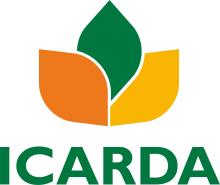Resource information
The reliance on groundwater for irrigation is increasing in Australia and India, which is causing concerns to policy makers about energy consumption and greenhouse gas (GHG) emissions. Therefore, it is important to quantify the GHG emissions of all components of the groundwater-based irrigation systems, over the entire life cycle to develop more environmentally friendly groundwater management strategies. This study identified and analysed energy use and GHG emissions associated with different components in the supply chain of groundwater-based irrigation systems. An existing GHG emissions and energy-accounting framework was adapted to enhance its capabilities by considering drilling techniques, water distribution and irrigation application methods. The results of this study highlighted that embodied and direct GHG emissions from drilling tube wells were higher in the Musi catchment, India, compared to South Australia. The study also highlighted that GHG emissions associated with water conveyance were higher for concrete and plastic-lined channels than unlined channels. Drip irrigation systems in both countries were found to have more GHG emissions than gravity-fed systems. Centre pivot systems were found to be emitting more than the drip systems in South Australia. We conclude that different components of the system have an impact on total GHG emissions and energy consumption for both countries. Any change in the most commonly used methods of drilling bore wells, water distribution in channels, and the irrigation methods, will have distinct impacts on energy consumption rates and GHG emissions. The developed conceptual framework provided a systematic complete analysis of the energy-consuming and GHG-emitting components associated with groundwater-based irrigation systems. Policy makers and decision makers may use the developed framework to compare different system components to develop strategies that have minimal impact on the environment. Copyright ? 2015 John Wiley & Sons, Ltd.



